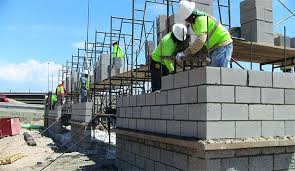Construction has been a cornerstone of human civilization, masonry construction shaping the way societies develop and function. From the ancient wonders like the Pyramids of Giza to the towering skyscrapers of today, the field of construction has continually evolved. This article delves into the journey of construction, highlighting significant advancements and the future of building technologies.
Ancient Construction Techniques
Ancient civilizations exhibited remarkable ingenuity in their construction methods. The Egyptians, for example, mastered the art of building with stone, creating structures like the Pyramids with precise alignment to astronomical points. This era relied heavily on manual labor and rudimentary tools, yet produced some of the most enduring structures in history.
In Mesopotamia, builders used sun-dried and kiln-fired bricks to construct ziggurats, which served as temples. The Romans, on the other hand, introduced concrete to the world, revolutionizing construction with structures like the Pantheon and aqueducts. Their use of arches, vaults, and domes set new standards in architectural design.
The Middle Ages to the Industrial Revolution
The medieval period saw the construction of massive cathedrals and castles, characterized by the Gothic architectural style. Techniques like flying buttresses and ribbed vaults allowed for taller, more light-filled structures. The use of stone remained prevalent, with advancements in quarrying and carving tools improving precision and efficiency.
The Industrial Revolution marked a significant turning point in construction. The introduction of machinery and steam power transformed building practices. Iron and steel became primary materials, enabling the construction of longer bridges and taller buildings. Prefabrication methods also emerged, reducing construction time and costs.
Modern Construction Technologies
The 20th and 21st centuries have witnessed exponential growth in construction technology. The development of reinforced concrete and structural steel has allowed for unprecedented architectural feats. Skyscrapers like the Burj Khalifa and innovative structures like the Sydney Opera House exemplify the possibilities of modern engineering.
Building Information Modeling (BIM) has revolutionized the planning and execution of construction projects. BIM allows for the creation of detailed 3D models that integrate data from various stakeholders, improving accuracy and collaboration. This technology reduces errors and enhances efficiency, ultimately saving time and resources.
Sustainable construction practices have also gained prominence. The use of green building materials, energy-efficient systems, and waste reduction techniques are now integral to many projects. LEED (Leadership in Energy and Environmental Design) certification has become a standard for evaluating the environmental performance of buildings.
The Future of Construction
The future of construction is being shaped by cutting-edge technologies and innovative materials. 3D printing, for instance, is poised to revolutionize the industry by enabling the rapid construction of complex structures with minimal waste. This technology has already been used to create houses, bridges, and even components for space habitats.
Artificial Intelligence (AI) and robotics are also making significant inroads. AI can optimize project planning and management, predict maintenance needs, and enhance safety by identifying potential hazards. Robotics can perform repetitive or dangerous tasks, reducing the risk to human workers and increasing precision.
Smart buildings, equipped with Internet of Things (IoT) devices, are becoming more common. These buildings can monitor and control various systems, such as lighting, heating, and security, to improve efficiency and comfort. The integration of renewable energy sources, like solar panels and wind turbines, is also expected to become more widespread.
Conclusion
The evolution of construction reflects the broader progress of human society, from ancient ingenuity to modern technological marvels. As we continue to innovate, the construction industry will play a crucial role in addressing global challenges such as urbanization, climate change, and resource management. The future holds exciting possibilities, promising smarter, more sustainable, and efficient construction practices that will shape the world of tomorrow.

